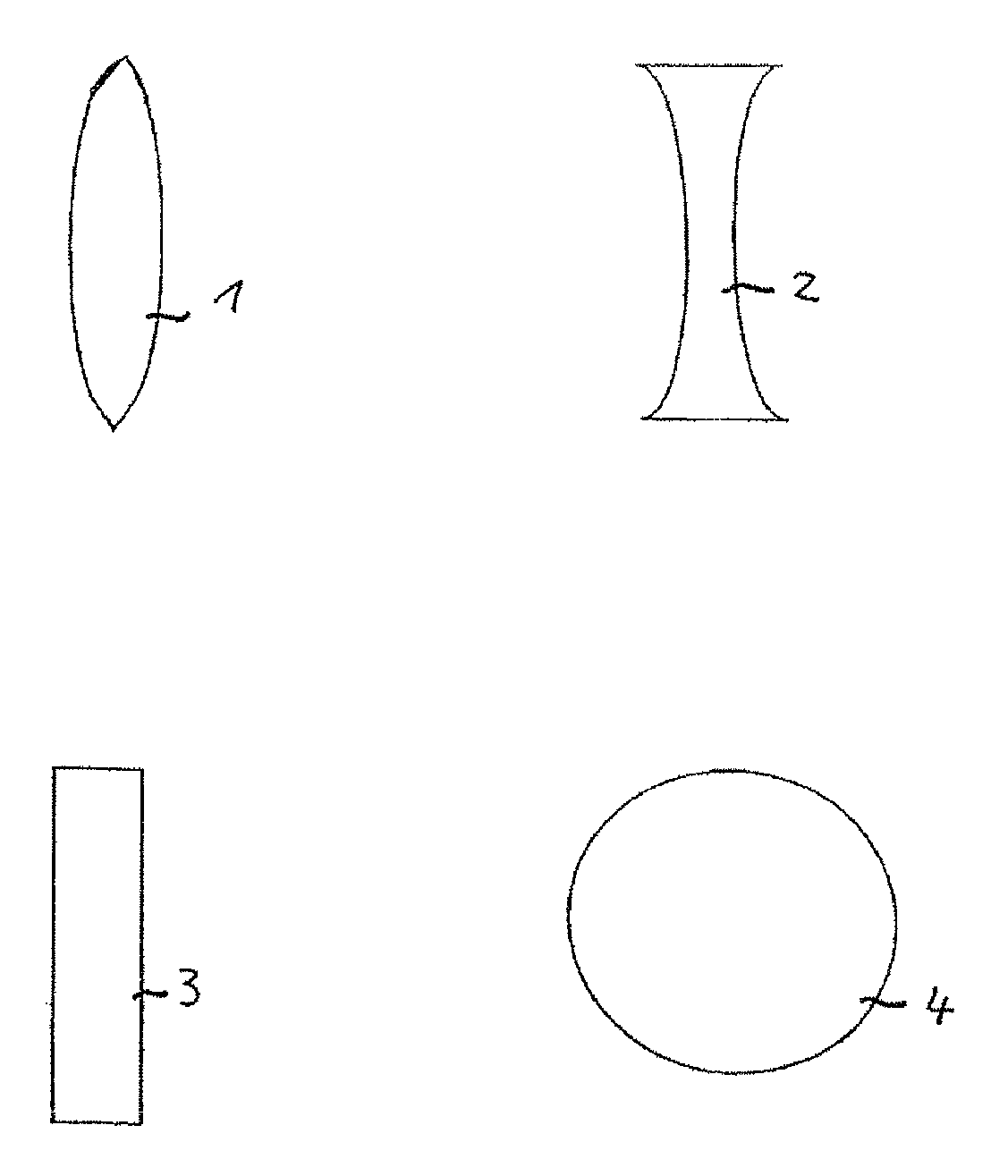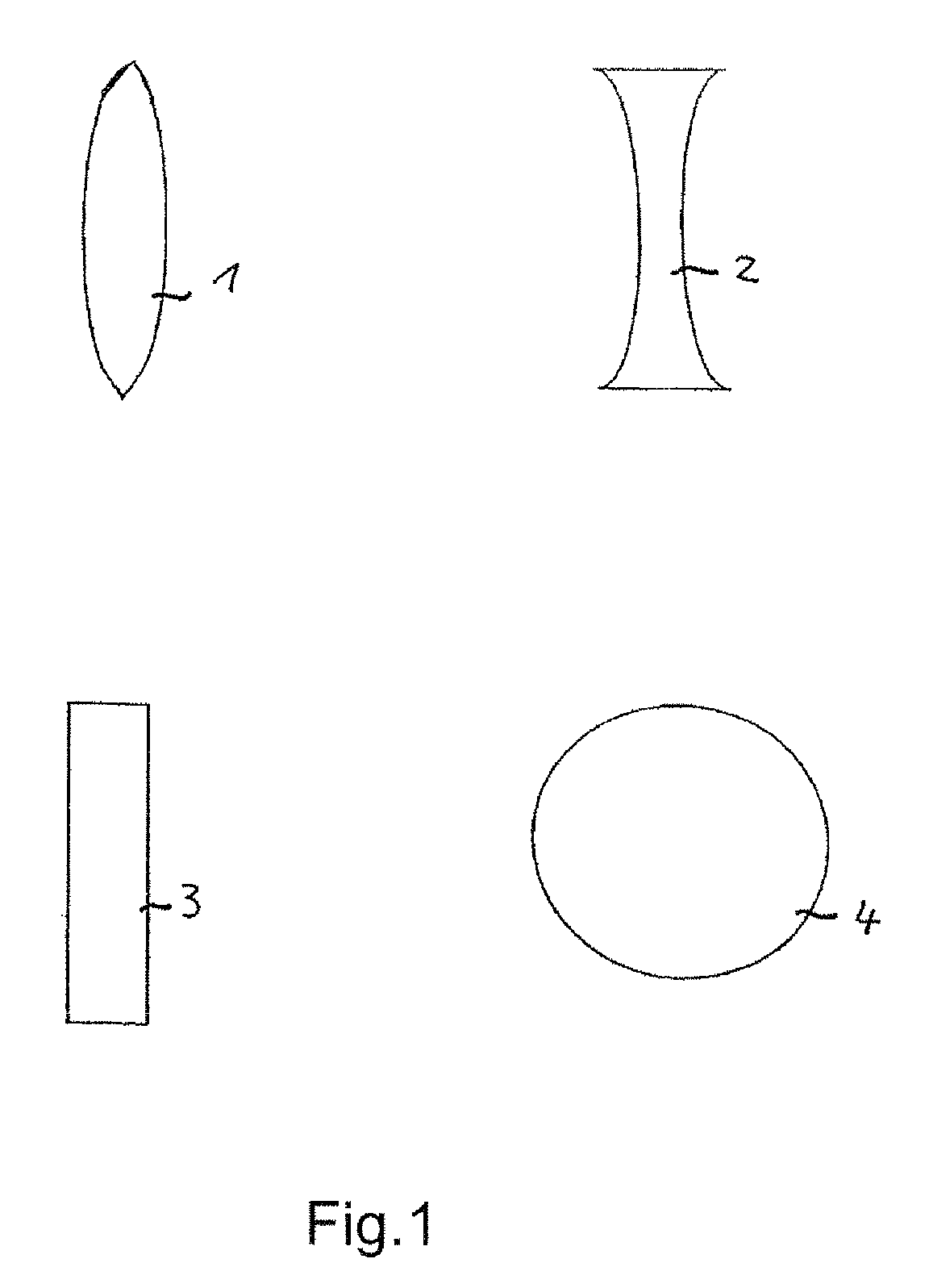Optoceramics, optical elements manufactured thereof and their use as well as imaging optics
a technology of optical elements and optical components, applied in the field of optoceramics and refractive, transmissive or diffractive optical elements, can solve the problems of limited development of imaging optics, difficult to manufacture such glasses in high quantities and sufficient quality, and may not achieve high densities of optoceramics, etc., to achieve low cost, low weight, and low depth of installation space
- Summary
- Abstract
- Description
- Claims
- Application Information
AI Technical Summary
Benefits of technology
Problems solved by technology
Method used
Image
Examples
Embodiment Construction
[0058]The four examples of transmissive and / or refractive optical elements according to the present invention shown in FIG. 1 comprise a biconvex lens 1, a bio-concave lens 2, a purely transmissive optical element 3 and a spherical lens 4. The indicated lenses 1, 2 and 4 are preferred applications of the optoceramics according to the present invention with regard to the optical elements.
[0059]As described in the following, the optoceramics according to the present invention are transparent materials with refractive indexes nd above or equal to about 1.90, preferably between about 2.0 and about 2.7, particularly preferred between about 2.1 and about 2.7. Most preferred is a refractive index of above 2.25 and even more preferred above 2.30. An Abbe number concurrently is in the range of from about 10 to about 45, preferably between about 10 and 40, particularly preferred between about 12 and 35. This facilitates novel combinations of materials for use in achromatisation of lens system...
PUM
| Property | Measurement | Unit |
|---|---|---|
| Length | aaaaa | aaaaa |
| Fraction | aaaaa | aaaaa |
| Fraction | aaaaa | aaaaa |
Abstract
Description
Claims
Application Information
 Login to View More
Login to View More - R&D
- Intellectual Property
- Life Sciences
- Materials
- Tech Scout
- Unparalleled Data Quality
- Higher Quality Content
- 60% Fewer Hallucinations
Browse by: Latest US Patents, China's latest patents, Technical Efficacy Thesaurus, Application Domain, Technology Topic, Popular Technical Reports.
© 2025 PatSnap. All rights reserved.Legal|Privacy policy|Modern Slavery Act Transparency Statement|Sitemap|About US| Contact US: help@patsnap.com


